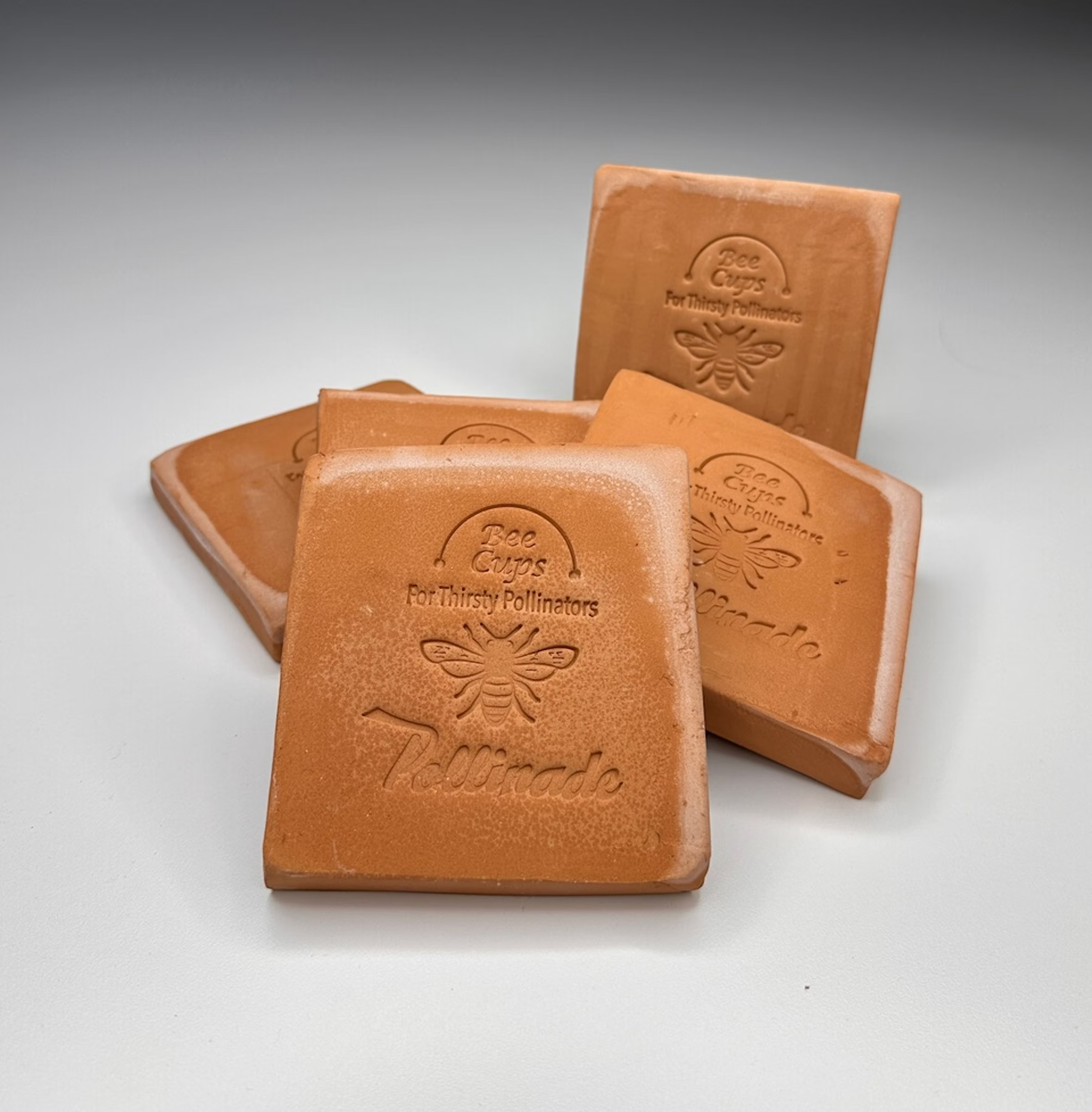The 3 Big Reasons Birds Aren’t Visiting Your Bird Bath – Plus, Smart Bird Bathing Ideas To Bring More Birdies Fluttering To Your Yard
You love garden birds, so why don’t they visit your bird bath? Here are 3 key reasons why, along with quick and clever bird bath ideas to encourage feathered friends to drink and play
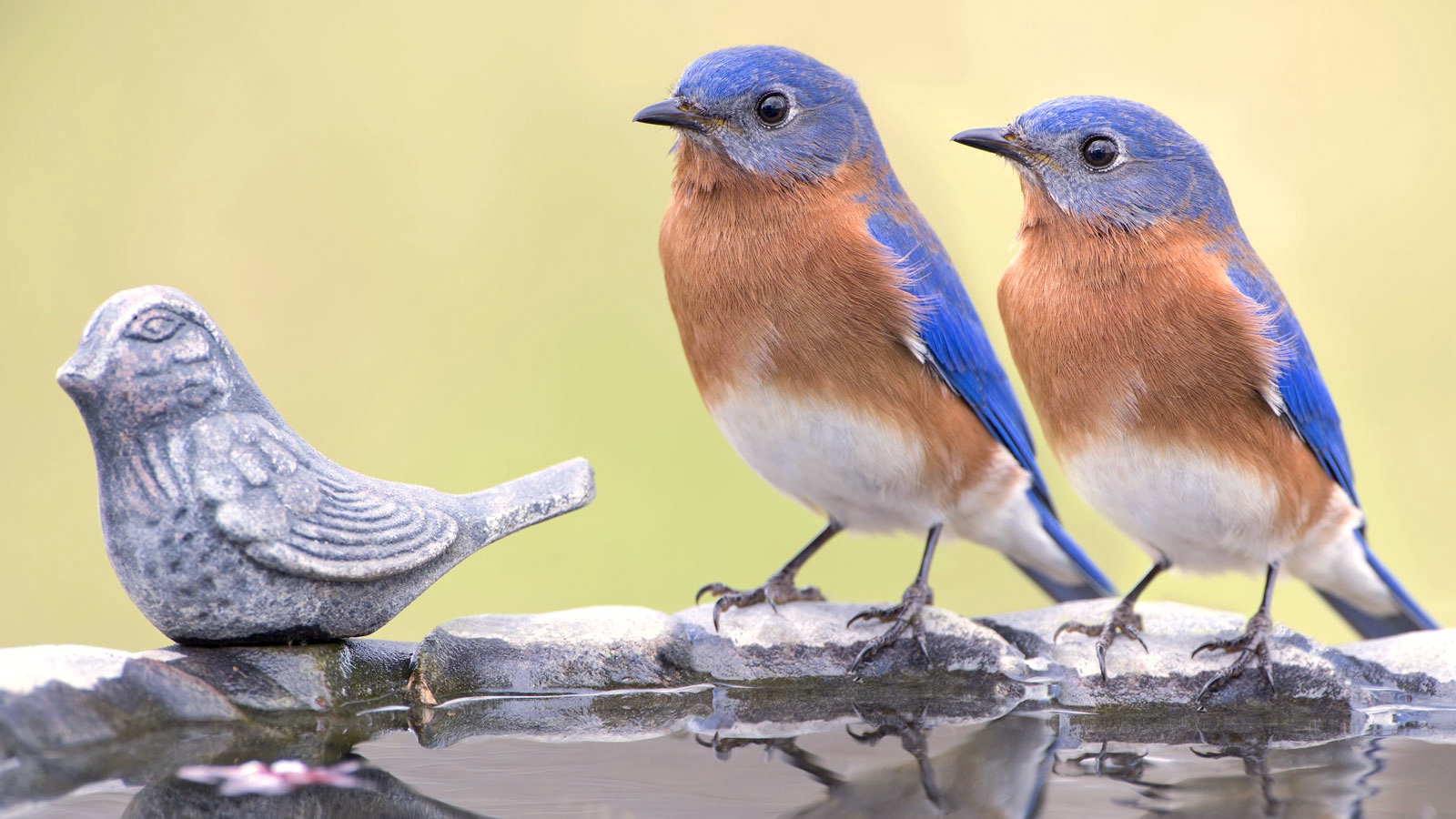

You’ve been hoping for a birdie binge, but the garden feels suspiciously short of splish-splashing. If your garden was a song, it would probably be ‘The Bird Bath Blues’. That said, if you can’t quite figure out why birds aren’t visiting your yard, don’t worry – a few pointers and bird bath ideas are all it takes. The important thing is that you can identify the cause and take steps to rectify the problem. This countdown of the big reasons birds aren’t visiting your bird bath aims to help you do just that.
Figuring out the reason for your bird-free zone is crucial if you want to attract birds to the garden for bathing and play, as well as feeding and nesting. The best bird bath doesn’t have to be the most expensive or the most fancy – so hopefully these bird bathing tips will have plenty of feathered friends flocking to your yard and paddling merrily. So come on, it’s time to say goodbye to the bird bath blues!
Why Birds Don’t Visit Your Bird Bath
An ignored bird bath is a sad and lonely spectacle in a garden. You’ll have been hoping to create a mini bird sanctuary amongst the flower beds – yet despite the occasional bit of activity around the bird feeder, it’s mysteriously absent at the water station. Seeing birds at play is one of the garden’s true joys, so a solitary bath is disappointing. Worse than that, it could be a sign of trouble, either in the bath or nearby.
The presence of overlooked, misplaced and possibly fetid bird bath water runs counter to all the hours of effort many of us put into our gardens every week. Why let a genuine act of kindness be undone by a simple oversight that can be easily remedied? Here are some of the core issues that could be standing between you and a garden full of bird song and avian antics, with practical bird bath tips on how to make things right.
1. Lack of Cleanliness

Gardening can be a full time passion, we get it – and so inanimate objects like bird baths don’t get our full attention. But a dirty bird bath is almost certainly going to force potential avian visitors into the next door neighbor’s yard. Even if it doesn’t look obviously awful, neglected water stations can quickly become rife with algae, germs and other problems. If fecal waste is present, it can lead to infections like salmonellosis. Certain diseases have actively contributed to dwindling bird numbers. So frequent and meticulous cleaning is a must.
How you approach this will depend on the size, shape and composition of the bird bath. Lightweight, detachable items are clearly going to be easier to dunk in a large basin for cleaning, whereas more rigid, heavier, large bird baths will require on-the-ground cleaning. We get that it’s tempting to push this job back in favor of more exciting, colorful and creative tasks in the backyard. But if your bird bath is getting cluttered with tree debris and other detritus, then that’s your reason why the birdies won’t play.

Cleaning frequently makes the job that much easier. So save yourself some future elbow grease and keep the job manageable. Depending on the extent of the issue and the texture of the bird bath, a cloth or sponge dipped in diluted household cleaners or a light vinegar solution may be sufficient. Wear protective gloves when cleaning your bird bath. Remove any obvious debris, then scrub rigorously with soapy water, before rinsing thoroughly with fresh water.
One nifty and inexpensive bird-bath cleaning solution is the CareFree Bird Bath Cleaner from Walmart, a mineral spray that can be used safely on metals, plastics and ceramics. For more obviously entrenched dirt and sludgy water, it may be necessary to bring in backup. If so, use ActiClear’s Muck Clear from Amazon.com, which speeds up a dirty job and quickly restores ingrained dirty surfaces to their former glory.
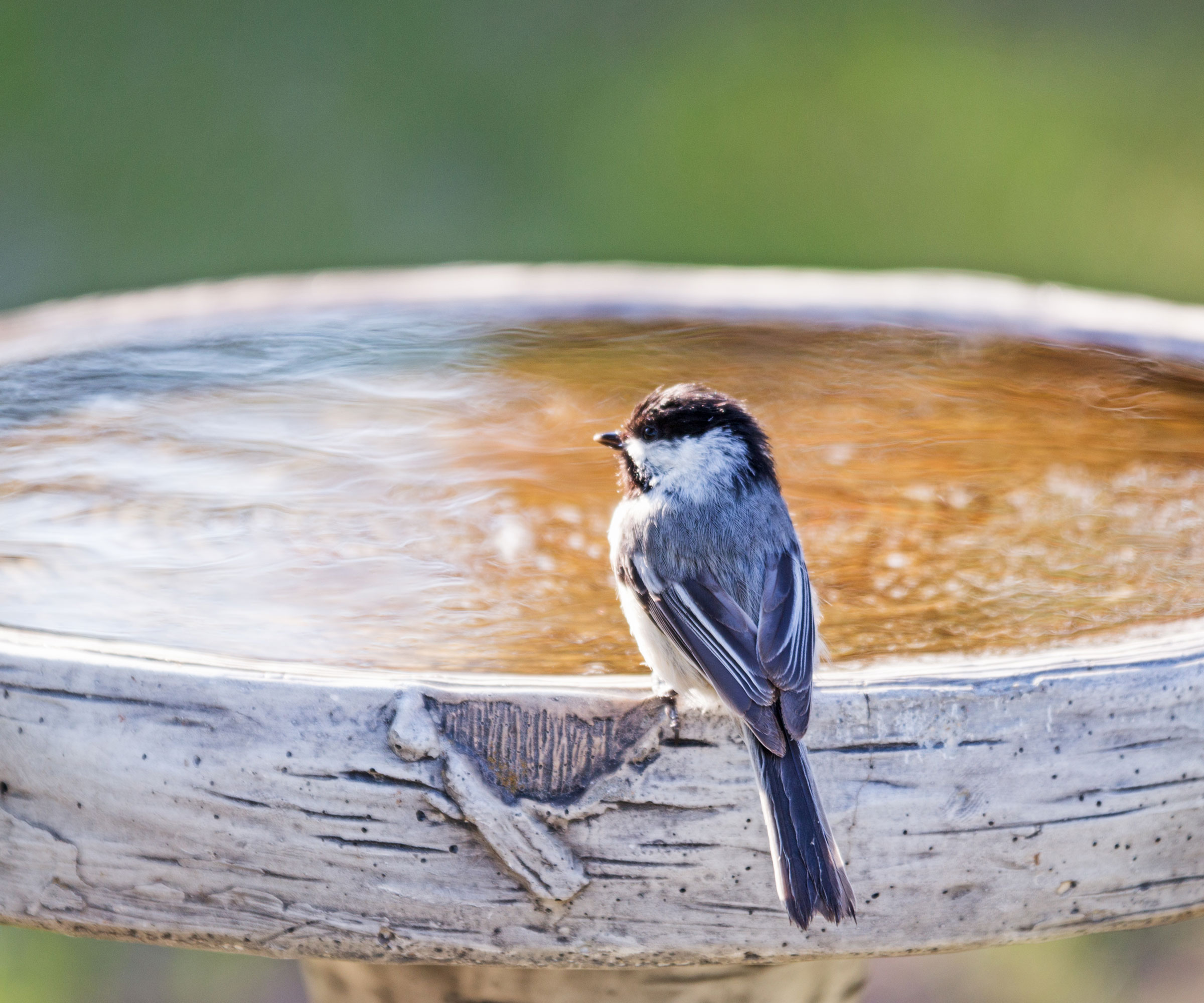
Ideally, you should be cleaning your bird bath at least once a week. Replenish your clean bird bath with fresh water once you are sure that any products used have been allowed to air-dry. Finish with the Sanco Bird Bath & Fountain Maintenance formula from Amazon which aims to keep water cleaner and clearer for longer.
2. Poor Location
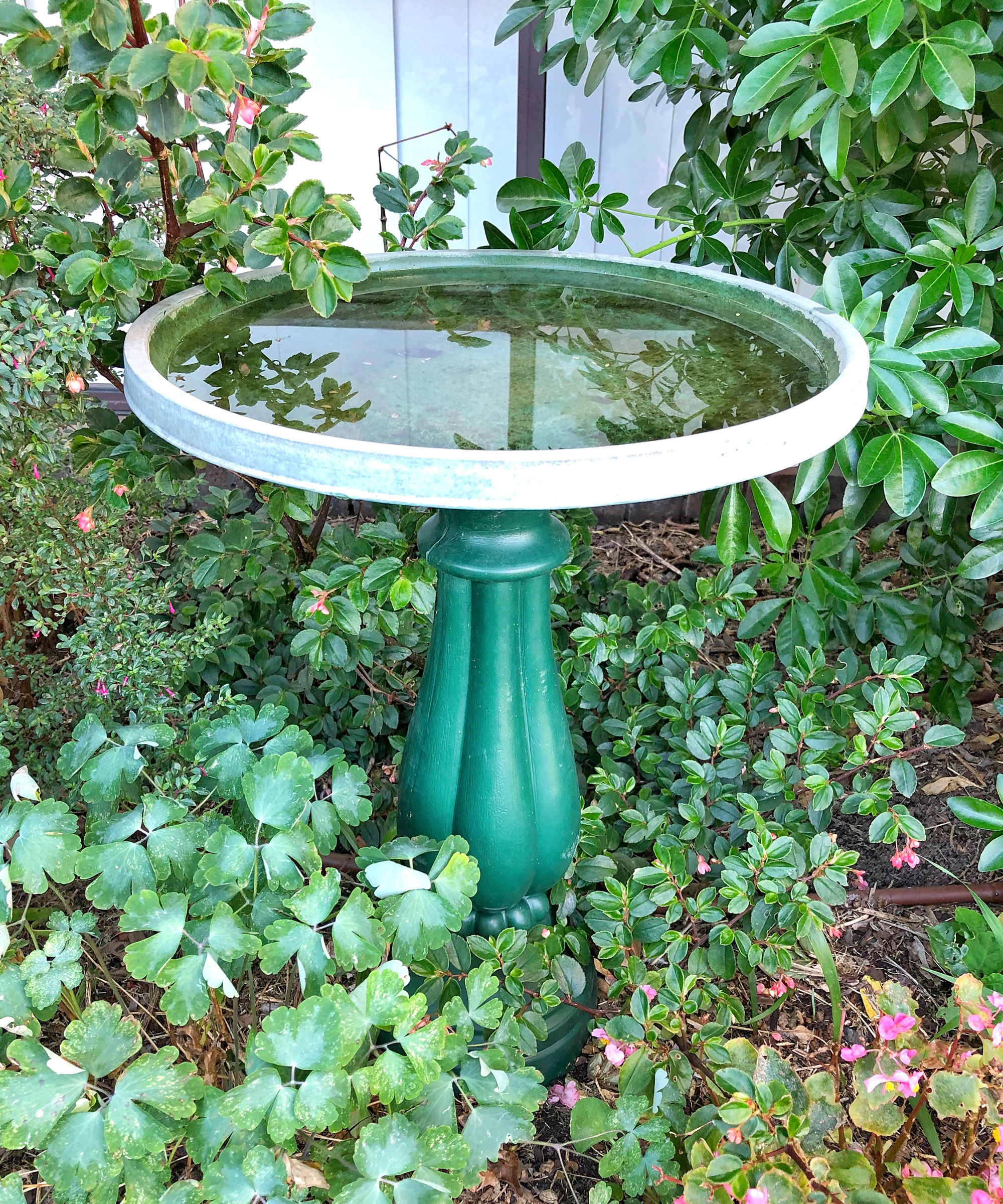
It’s understandable that you want a clear view of the bird bath when you’re stealing a few moments from your window perch. But spare a thought for what your feathered friends need. Safety and security are tantamount to a visiting birdie. Ideally, a bird bath or planter needs to be situated somewhere that is secluded, but not too easily accessible to predators such as cats. If yours is lurking near a cat-friendly wall or step, this will have a direct impact on any flying visitors. Ideally, bird baths should be placed where they have a clear view of cats and other predators.
Conversely, if your bird bath is basking in direct sun, this could be causing different problems, such as accelerated evaporation, overheating, and algae. It’s a balancing act – you have to be mindful of predators, but you also need to keep things cool and protected for little guests. Also, birds are less likely to visit ground-based baths, or baths placed on raised beds where cats may be sunbathing. If you’ve had yours smack in front of a patio window and are wondering what’s up, it’s time for a rethink.
Sign up for the Gardening Know How newsletter today and receive a free copy of our e-book "How to Grow Delicious Tomatoes".
Try positioning the bird bath near small trees and shrubs that birds like, allowing them a natural hiding place. These trees also afford hanging opportunities for bird feeders, which are worth deploying within range of a bird bath. Consider something squirrel-proof, like the excellent Garden Guru Squirrel Proof Mesh Tube Bird Feeder, available in the Gardening Know How Shop. Make sure the bath is a decent height, as well. For hummingbirds, the Sugar Shack Hanging Hummingbird Feeder from Wayside Gardens is an innovative floral feeder that can be secured within easy reach of a bird bath where trees and shrubs are options.
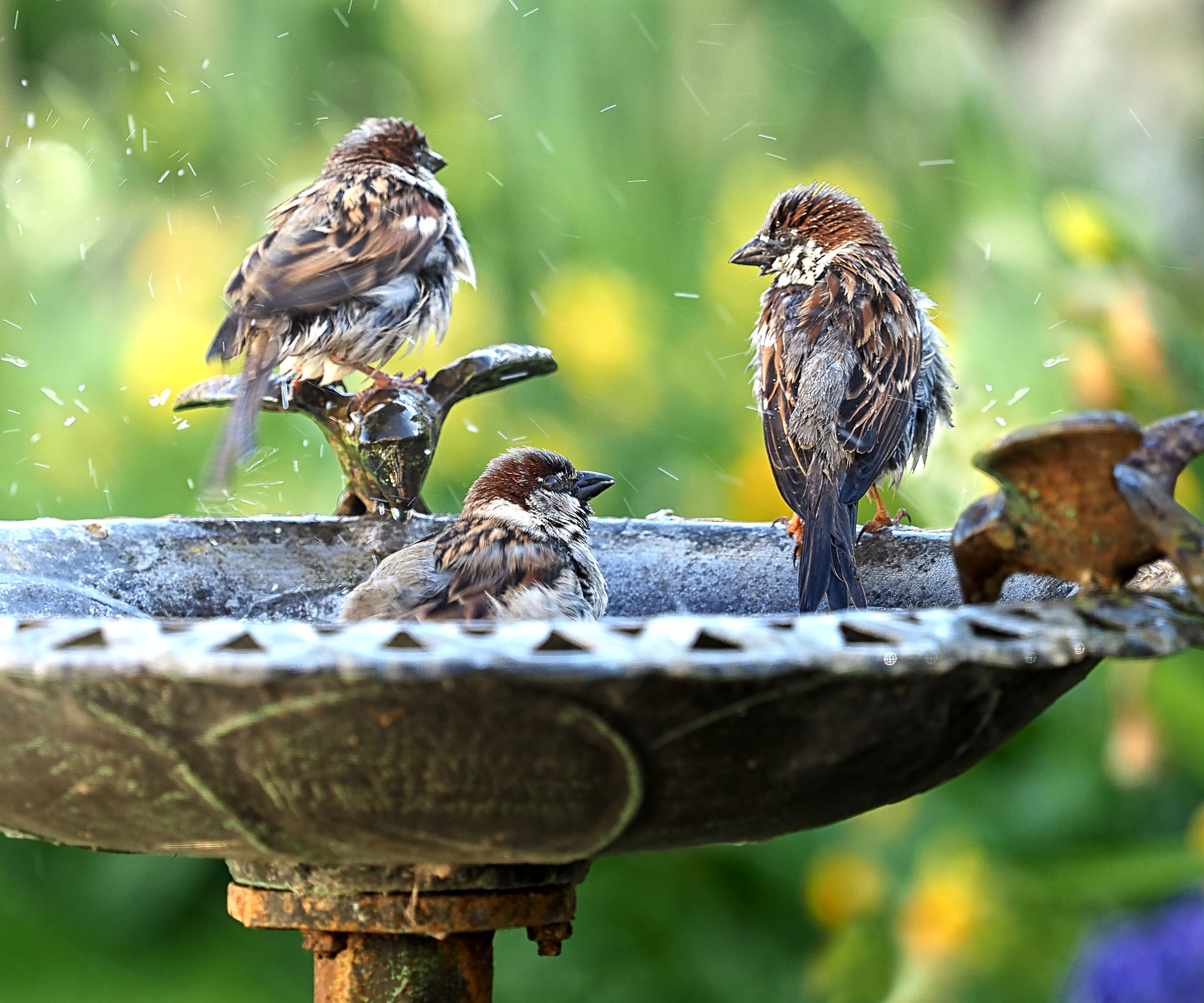
Deploy some simple but effective bird bath landscaping ideas. When adding shrubs and trees, think strategically about what birds might like. It will greatly increase your chances of developing a thriving bird community that takes pleasure in a bird bath as part of a wider beneficial environment. If you’re looking for good planting options to entice hummingbirds, grow tubular flowers and vining plants for hummers within range of the bird bath. Trumpet honeysuckles such as ‘Major Wheeler’, available in the Gardening Know How Shop, are a perfect option for flowering fragrance, and will also attract robins, Baltimore orioles and blackbirds.
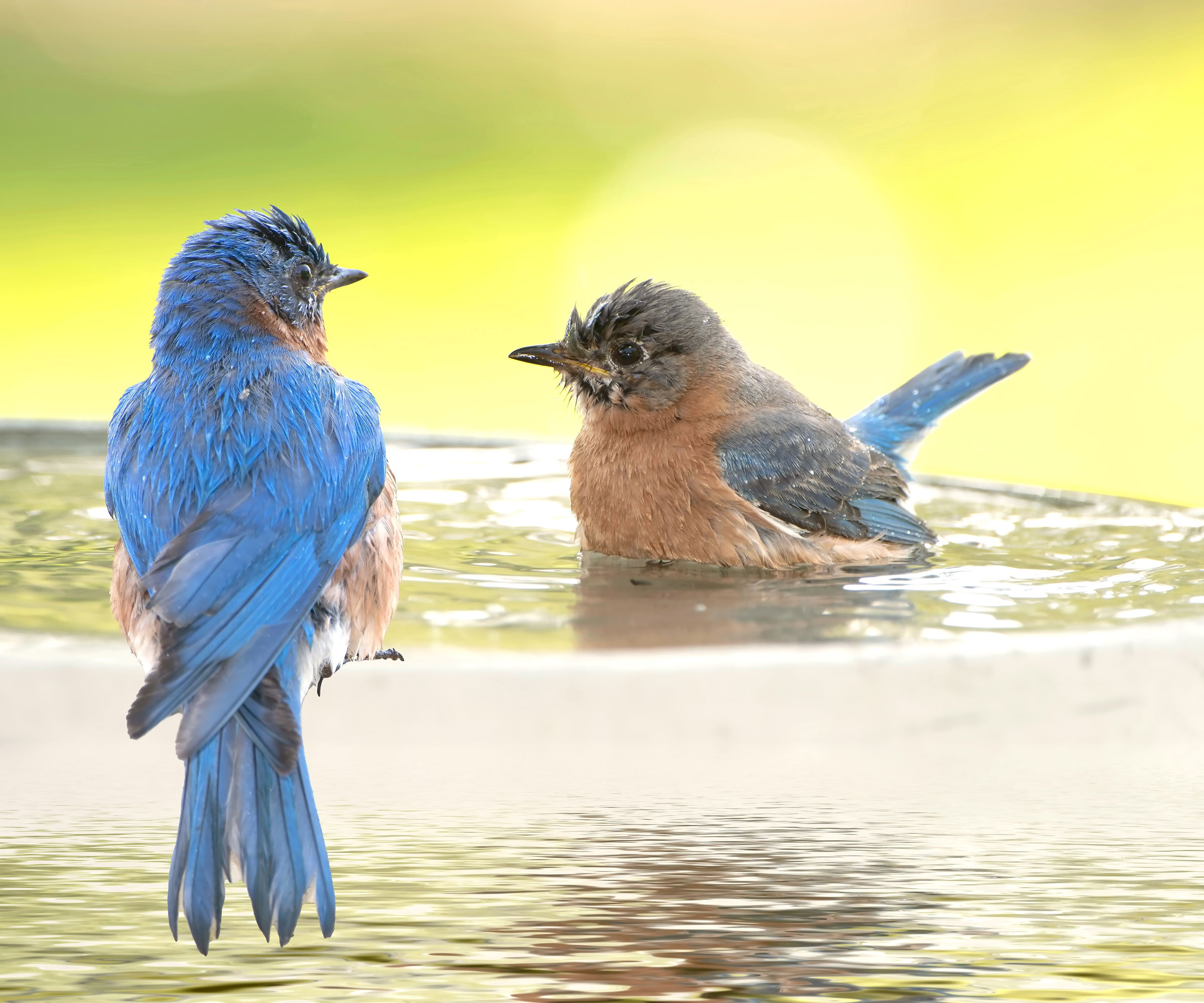
Clambering Virginia creeper is another joyful choice if you want to bolster the appeal of a bird bath, and presents a gorgeous fall display and bird-friendly berries that will delight Eastern bluebirds, robins, chickadees, mockingbirds, bluejays and nuthatches. Another fruiting option is pink and blue-berried ‘Winterthur’, available in the Gardening Know How Shop, which works hard as part of a wider shrub border as well as helping keep the likes of cardinals, thrushes and waxwings happy around the bird bath.
Make sure your bird bath is well serviced with plenty of berrying options in colder months, including a selection of elderberries, chokeberries and serviceberries. Coupled with flowers that attract birds through summer and birdseed plants in fall, these are great ways to make your bird bath more visually appealing, safer, stimulating – and fruitful.
3. Wrong Color and Size of Bath
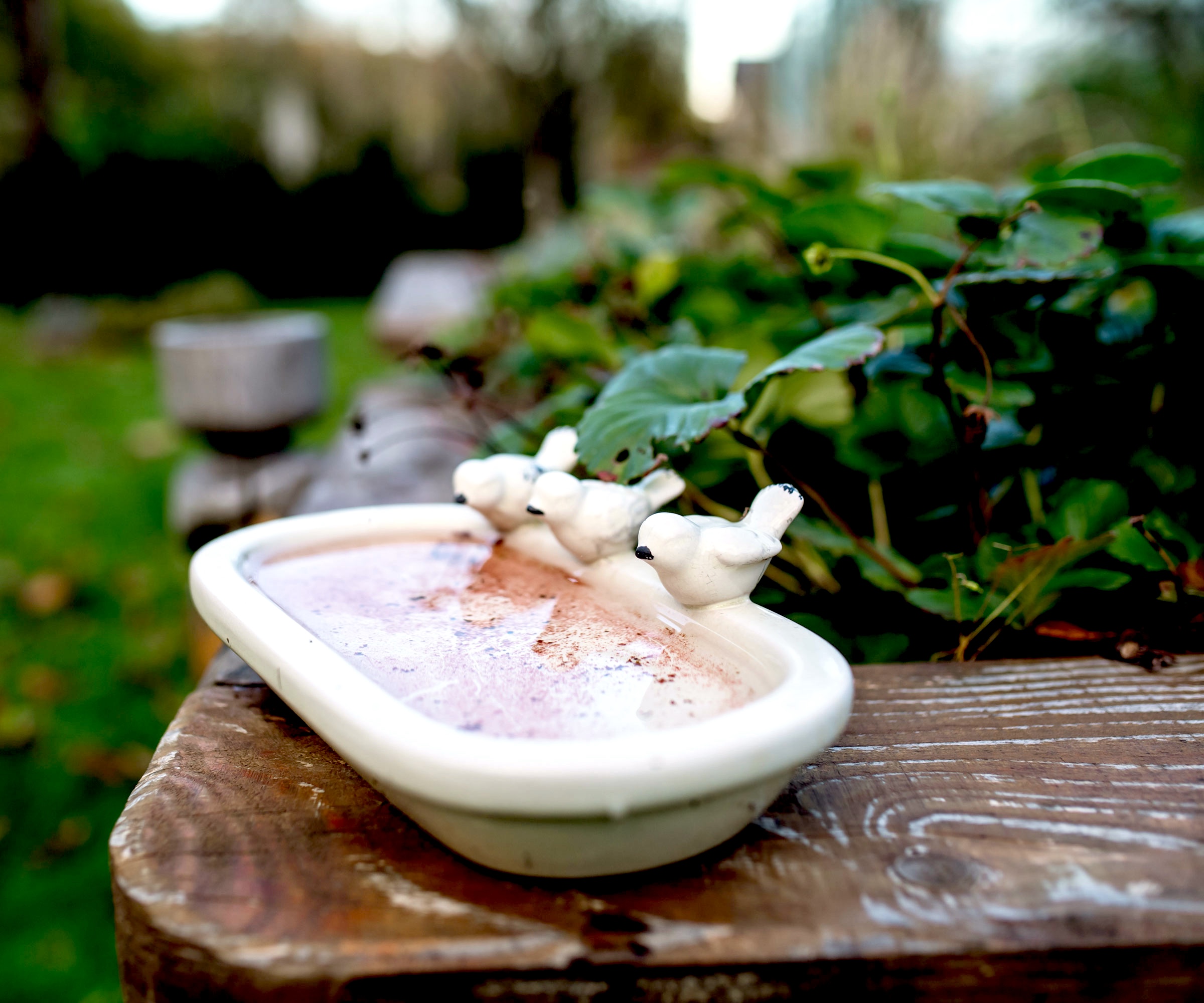
When you’re focused on doing something nice for your winged friends, it can be hard to believe that something as simple as color could be the problem. But studies indicate that blues, greens and silvers hold particular appeal for the majority of garden birds.
According to the Royal Society for the Protection of Birds (RSPB), blues and silvers have the most cross-season appeal. Blues apparently put birds at ease, due to being reminiscent of the sky. This color also feels good to certain bird species like blue jays because of their own plumage coloring – something that is particularly significant during the mating season. Meanwhile, greens create a sense of comfort, much like the shrubs and trees birds like to rest in. Green is notably popular with thrushes, goldfinches and greenfinches.
Now, we’re not saying all birds have the exact same affinity with every color. For instance, hummingbirds and siskins are fond of reds, and robins like blacks. But on the whole, reds and yellows are associated with warnings in nature. What you might find surprising is that white is generally not a popular color, either. It’s not so bad in the odd little floral burst, but as a solid visual, it can be unsettling to birds. So if your bird bath features reds, yellows or whites, this may be what’s putting off many bird species.

If you’re in the market for a new bird bath, use this as the basis for your next purchase. A great option for weather resistance, sturdiness, style and color is the Colley Birdbath by Ophelia & Co, available from Wayfair.com – with its elegant base and antiquated turquoise tones.
That said, you don’t have to buy a blue bird bath. Many old-fashioned gray and brown stone shades and weathered copper tones work beautifully, serving as handy camouflage and helping to make birdies feel at ease while they drink and bathe. The Gardening Know How team loves the Dreamsoul Deckmounted Birdbath Bowl at Amazon.com, with an adjustable clamp that creates a secure and tasteful dark copper bathing area for birdies.
As well as color, spare a thought for the shape and texture of the bird bath. Sure, you want something that can attract multiple birds to bathe at once. But if you want to attract tiny songbird species like sparrows and finches, it should be something they can navigate with comfort and discretion. If it’s too deep, that’s a huge no-no. What you’re aiming for is something that can be filled just a couple of inches deep.
The base of the bird bath needs to be non-slippy, preferably with some sort of texture for little birdie feet to grip, if need be. If your bird bath is slippy, introduce textural elements with small, flat rocks around the base of the bath, or a small, rough-textured mat of some kind. This is also a good idea if the bird bath is made of metal, which could become quite hot during summer. Finally, try to make sure there is a very slight incline for birds to edge their way in. Sudden sharp edges or steep inclines can be alarming to tiny bathers.
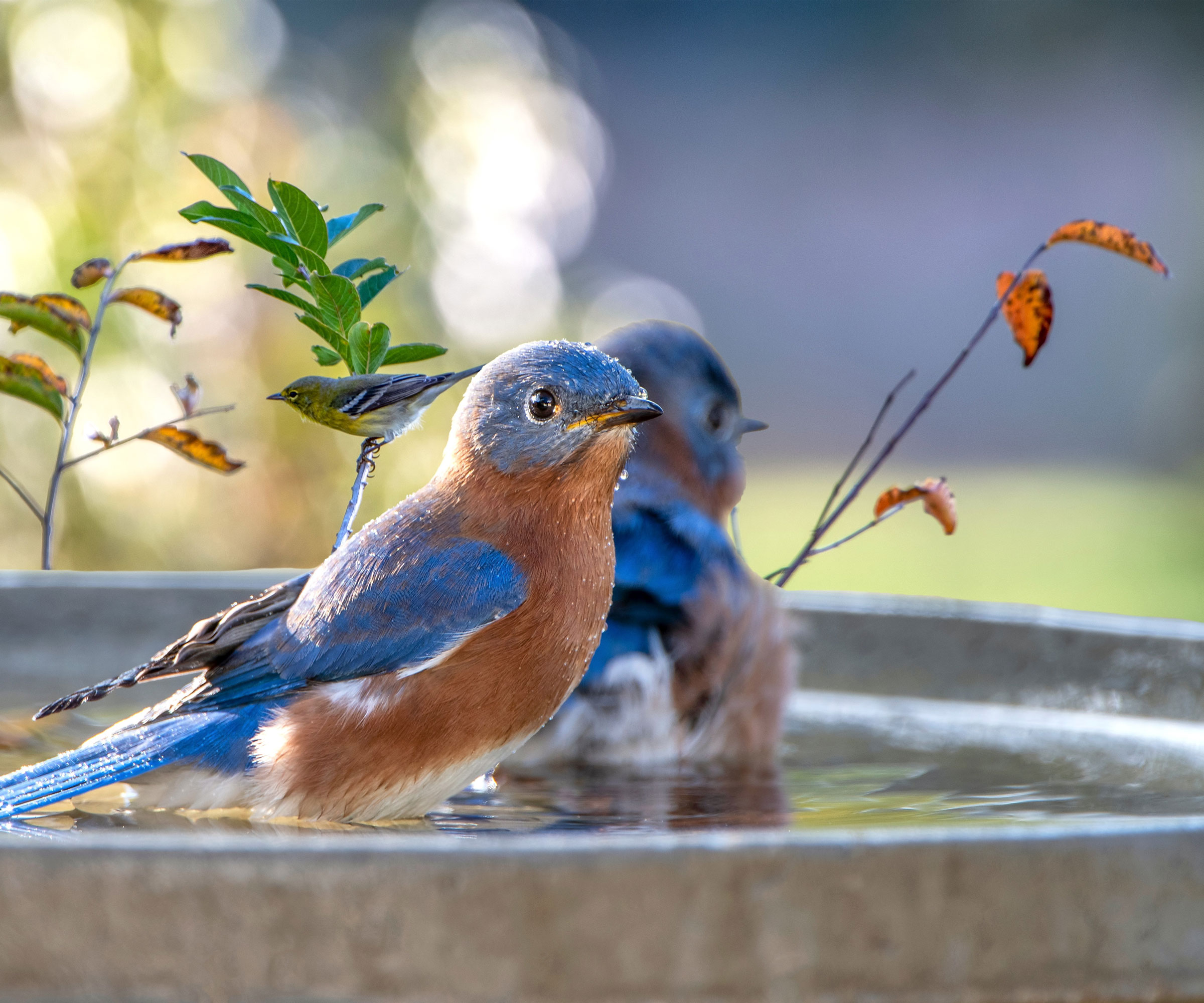
Interested in more ideas for bird-friendly gardening and expert advice delivered straight to your inbox? Sign up for the free Gardening Know How Newsletter!
This article features products available from third party vendors on the Gardening Know How Shop. Keep in mind that our plant inventory is limited - so if you’re thinking of purchasing, don’t wait!

Janey is a former assistant editor of the UK’s oldest gardening magazine, Amateur Gardening, where she worked for five years. For the last few years, she has also been writing and editing content for digital gardening brands GardeningEtc and Homes & Gardens. She’s taken part in a range of conservation and rewilding projects for the Royal Horticultural Society (RHS) and the British Trust for Conservation Volunteers (BTCV) as a way of exploring her horticultural horizons. She is currently undertaking her RHS Level 2 certificate in The Principles of Plant Growth and Development.
